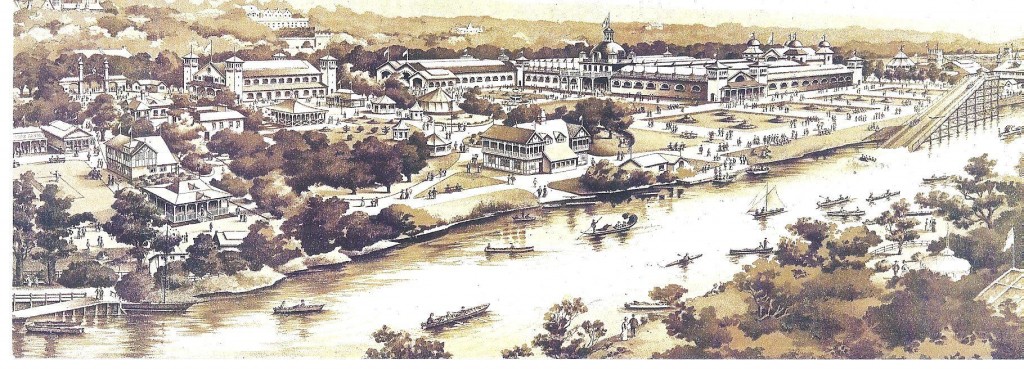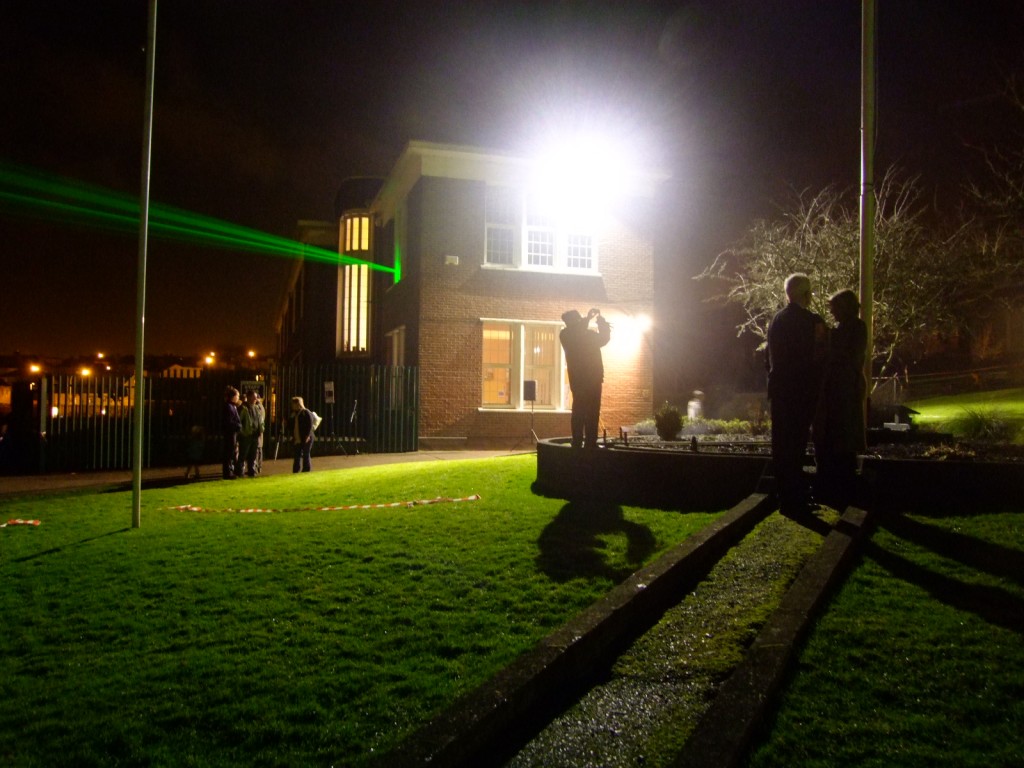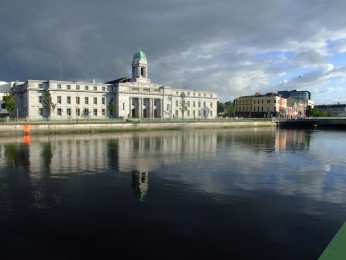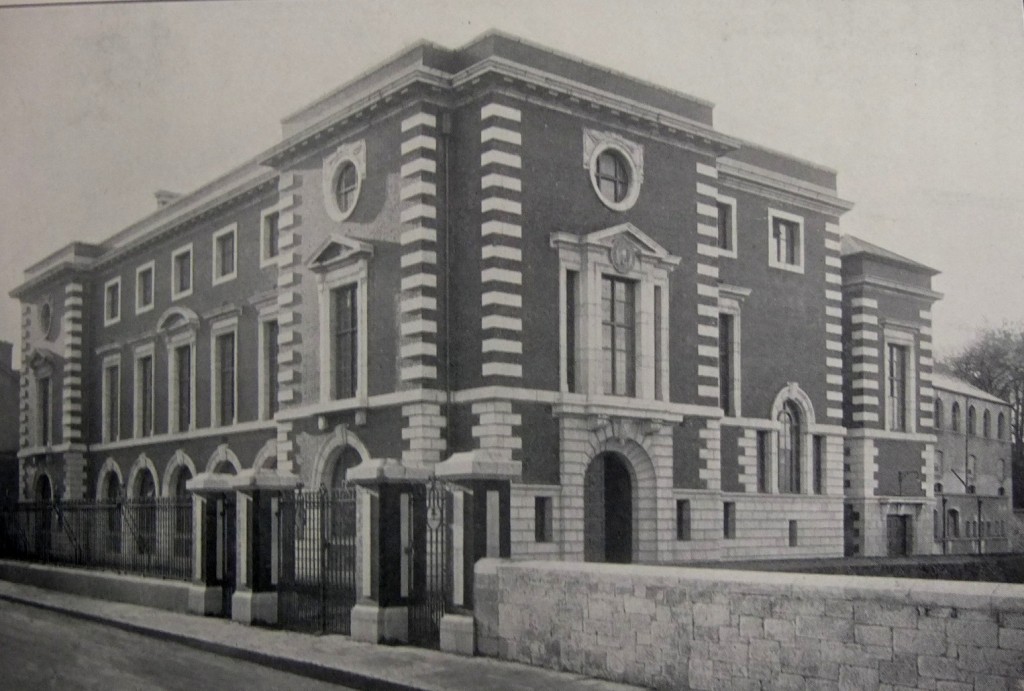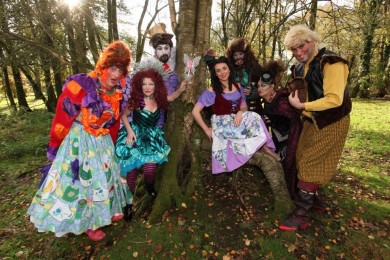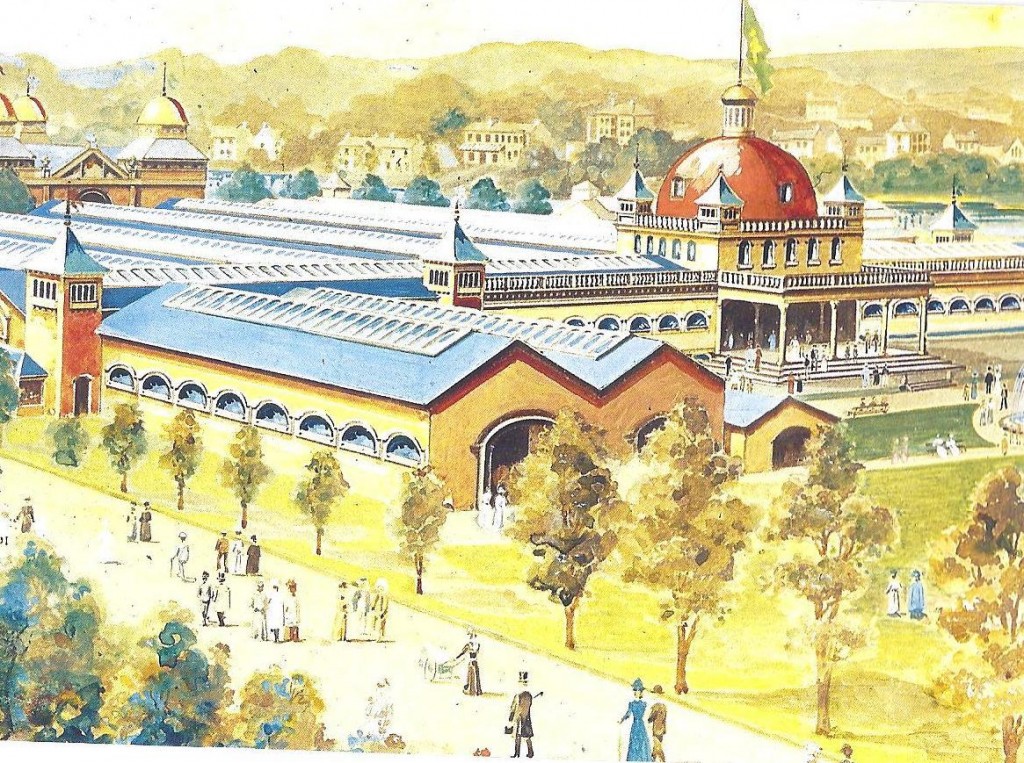
Kieran’s Our City, Our Town Article,
Cork Independent, 26 January 2012
Technical Memories (Part 3)
Renaissance Ireland
Three years after the passing of the Irish and Agriculture and Technical Instruction Act 1899 and the beginning of its associated Department in Dublin, Cork showed leadership in providing ample space for the Department to showcase its work at the Cork International Exhibition in 1902. Held at the Mardyke, the exhibition showcased the cause of industrial revival in Ireland and all its actions, programmes, ongoing discussions and ideas.
One of the exhibition halls was given over to the exhibits of the Department of Agricultural and Technical Instruction and its details can be viewed in archival catalogues that have survived in Cork City Library. The decoration of its stalls were designed and executed by the students of the Dublin Metropolitan School of Art, and were an adaptation of old Celtic designs. A special feature and a most notable piece of decorative work was an exact reproduction of the doorways and apse of Cormac’s Chapel at Cashel. This was and still is generally admitted to be the best example of Celtic Romansesque architecture in existence. Modelled in fibrous plaster by a Cork craftsman, the interior of the structure was used as a reception room and main office by the Department. This was situated just within the chief entrance to the Department’s section, which was through an elaborately beautiful openwork Celtic screen, designed and executed by the students of the Dublin Metropolitan School of Art.
The exhibits of the Departmental section were classified under various divisions: Firstly the agriculture section contained exhibits on dairying, cheese-making, horticulture, cottage gardening, forestry, bee-keeping, willow culture, poultry keeping, fruit and vegetable drying, and preserving, and some of the applications of technical instruction to these subjects. Indeed in the western section of the exhibition grounds there was a series of demonstration plots with different varieties of farm crops, calf feeding experiments, model byre and feeding sheds, a school garden and examples of cultivation suitable to labourers’ allotments.
The Department also established on the far west end of the exhibition grounds a working dairy, where there were exhibitions of butter and cheese manufacture based on the Scotch system, and one adapted to the means of the small farmer. The butter was made in hand churns by girls from the Munster Institute. About 80 gallons of milk were used in each day’s butter making, whilst the quality of milk used in the daily manufacture of cheese amounted to 120 gallons.
The second division showcased the application of art, science and technology and the work of technical schools and art schools, Irish, British and Continental. It featured decoration and works carried out by the art schools of Dublin, Belfast and Cork and a working boot-making exhibit under the management of the Cork Technical Institute. Two of the most popular features of the division and exhibition were a full sized science laboratory and workshop equipped and fitted up for twenty students each. There, through demonstrations by pupils of the Christian Brothers School or the North Monastery School and their supervisor Brother Dominic Burke, the Department’s programme for day secondary schools was displayed.
The third division presented illustrations of industries, which were deemed suitable for introduction into Ireland, and of some industries, which existed in the country already, and which were capable of improvement and development. The exhibits consisted of charts and models illustrative of the use of water power, and of the applications of electrical power and of gas and oil to small industries. There was a working textile exhibit containing a selection of modern looms and other improved machines intended to demonstrate means of developing the smaller woollen mills of Ireland. There were looms on display for the manufacture of carpets, and the weaving of ribbons, braces and belts. There were working exhibits illustrating the manufactory of pottery and glass, clock making, paper box making, straw hat making, Swiss wood-carving, the making of toys and dolls, artificial flower making, mosaic working, art enamelling and art metal working.
The fourth classification was fisheries, which covered illustrations of current methods used in sea and island fisheries of Ireland, and of manufactures connected with it and of developments, which could be introduced. Examples encompassed artificial propagation, trout farming, oyster culture, model hatcheries, boats and gear, net-making etc.
Next to the fisheries was the Statistics and Intelligence section, which presented charts, diagrams, maps, and publications and which demonstrated the economic circumstances of the country. Section six was about the country’s raw materials. Specimens of Irish minerals and ores were on display as well as clays suitable for pottery and sands applicable for the manufacture of white glass, and of building and ornamental stones.
Section seven was made up of the historic arts and crafts section. A loan collection was showcased and was illustrative of some artistic crafts, which formerly were practised with distinction in Ireland, and whose traditions could influence modern work. The collection included specimens of old Irish furniture, silver plate, cut glass, book bindings and reproductions of antique Celtic work. Indeed section eight involved the display of Celtic design and utilised Celtic elements of ornament with a view to reharnessing such designs in modern design.
To be continued…
Captions:
625a. Illustration of the central grounds of the Cork International Exhibition, 1902 (picture: Kieran McCarthy)
625b. Illustration of the central grounds of the Cork International Exhibition, 1902 (picture: Kieran McCarthy)
